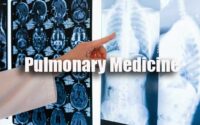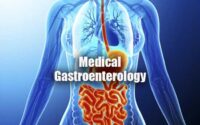Microbiology Sample Question
Microbiology Sample Question Papers help the aspirants in the preparation. Sample papers give an overview of the exam paper and the way questions are going to be. However, aspirants who are going to appear for examinations can get the Sample Question Papers pdf for free.

Also, check the exam pattern and syllabus details before going to the Microbiology Sample Question Papers. Microbiology exam Sample Question Papers paper are here. Aspirants can find the respective download links for Microbiology Sample Question Papers Pdf. check the latest Microbiology Sample Question Papers on our page.
Sample Question Papers on Microbiology
1. Which of the following bacteria is moderately saccharolytic ?
(1) Bacteriodes fragilis
(2) B gingivalis
(3) B melaninogenicus
(4) Blevii
2. Nagler’s reaction is useful for the identification of :
(1) C tetani
(2) C perfringens
(3) C botulinum
(4) C difficile
3. Clostridium botulinum food poisoning is due to :
(1) invasion of bacteria in the intestine
(2) preformed toxin
(3) both invasion of bacteria in the intestine and preformed toxin
(4) None of these
4. Typical drumstick appearance of bacilli is generally seen in :
(1) C perfringens
(2) C botulinum
(3) C tetani
(4) C histolyticum
5. Which of the following bacteria is associated with food poisoning due to consumption of sea fish ?
(1) Vibrio parahaemolyticus
(2) V alginolyticus
(3) V vulnificus
(4) All of these
6. Which of the following medium are used to differentiate the colonies of Vibrio cholerae and parahaemolyticus ?
(1) Alkaline bile salt
(2) Thiosulphate-citrate-bile-sucrose
(3) MacConkey
(4) All of these
7. The transport medium for Vibrio cholerae can be :
(1) Venkatraman-Ramakrishnan medium
(2) Selenite F broth
(3) Tetrathionate broth
(4) Nutrient broth
8. Which of the following toxin resembles cholera toxin ?
(1) Stable toxin of E. coli
(2) Diphtheria toxin
(3) Labile toxin of Escherichia coli
(4) Tetanus toxin
9. Cord growth seen on mycobacterial culture is characteristic of :
(1) Avirulent strains
(2) Virulent strains
(3) Saprophytic strains
(4) Atypical mycobacteria
10. Which one of the following are constituent of Lowenstein Jensen media except :
(1) Agarose
(2) Malachite green
(3) Mineral salts
(4) Asparagine
11. Mutations in katG gene of Mycobacterium tuberculosis are responsible for resistance to :
(1) INH
(2) Rifampicin
(3) Pyrazinamide
(4) Streptomycin
12. All of the following are non photochromogens, except :
(1) Mycobacterium ulcerans
(2) Mycobacterium xenopi
(3) Mycobacterium avium
(4) Mycobacterium marinum
13. M. Bovis is also a causative agent for Tuberculosis in human and is transmitted by :
(1) Cow’s milk
(2) Goat’s milk
(3) Camel’s milk
(4) Poultry
14. Non-tuberculous mycobacteria are those that do not infect lungs and are also called as :
(1) Atypical bacteria
(2) Non disease causing
(3) Facultative bacteria
(4) Neutral bacteria
15. The Actinomycetes that causes abscesses in the brain and kidney in immunodeficient patients are :
(1) Actinomycetes israelii
(2) Nocardia asteroids
(3) M. marinum
(4) M. leprae
16. An elderly male presented with fever, chest pain and dry cough. Sputum was cultured on charcoal yeast medium, the organism identified will be :
(1) H.influenza
(2) Moraxella catarrhalis
(3) Legionella
(4) Burkholderia cepacia
17. Salmonella typhi is the causative agent of typhoid fever. The infective dose of S. typhi is:
(1) One bacillus
(2) 10(8)-10(10) bacilli
(3) 10(2)-10(5) bacilli
(4) 1-10 bacilli
18. Clostridium perfringens type A occurs as a natural flora of
(1) Stomach
(2) Mouth
(3) Intestine
(4) Eyes
19. Erythrasma is caused by which of the following microorganism ?
(1) Corynebacterium diphtheria
(2) Corynebacterium ulcerans
(3) Corynebacterium minutissimum
(4) Listeria monocytogenes
20. The finding of large, multinucleated, clumps of cells in the bronchial secretions of a 2 year old girl with acute bronchopneumonia suggests that this infection is caused by :
(1) Bordetella pertussis
(2) Epstein-Barr virus
(3) Rhino virus
(4) Respiratory syncytial virus (RSV)
| Previous Year Question | Practice Set |
| Important Question | Viva Question |
| Sample Papers | Quiz |
| Model Papers | MCQs |
| Mock Test | Questions and Answers |
21. What is the most common cause of aseptic meningitis of viral etiology ?
(1) Enteroviruses
(2) Herpesviruses
(3) Arboviruses
(4) Orthomyxoviruses
22. When a virus enters a cell but does not replicate immediately, the situation is called :
(1) Lysogeny
(2) Fermentation
(3) Symbuosis
(4) Synergism
23. Which of the following is semi-continuous (diploid) cell line ?
(1) HeLa
(2) HEp-2
(3) WI-38
(4) KB
24. The viral DNA is removed from the host’s chromosomes and the lytic cycle occurs. The process is called :
(1) Spontaneous induction
(2) Inductive infection
(3) Resultant induction
(4) Spontaneous infection
25. In the simplest capsid, there is a capsomere at each of the 12 vertices. This capsomere, which is surrounded by five other capsomeres, is termed as :
(1) Penton
(2) Polyhedral
(3) Icosahedral
(4) Helical
26. Which one is not useful in the treatment of viruses EXCEPT :
(1) Acyclovir
(2) Interferon
(3) Penicillin
(4) Antibodies
27. The most popular indirect method of counting virus particles is by :
(1) Hemagglutination assay
(2) Plaque-assay
(3) Counting plaque-forming units
(4) Colony counting
28. Inclusion bodies of measles virus are :
(1) Intracytoplasmic
(2) Intranuclear
(3) Both Intracytoplasmic and Intranuclear
(4) None of these
29. Which of the following oncogenic viruses was first detected ?
(1) Rous sarcoma virus
(2) Epstein-Barr virus
(3) Herpes simplex virus type 2
(4) Human T cell leukaemia virus
30. Which of the following viruses can rescue adenovirus in simian cells ?
(1) Rabies
(2) Vaccinia
(3) Simian virus 40
(4) Cytomegalovirus
31. The extracellular phage number increases until a constant titer at the end of the multiplication cycle. This time interval is termed as :
(1) Eclipse period
(2) Rise period
(3) Latent period
(4) Burst size
32. Viral gastroenteritis in young children is caused by :
(1) Echo virus
(2) Rota virus
(3) Coxsackie virus
(4) Rhino virus
33. In the virion structure, the regulatory protein is present which is known as:
(1) Tegument
(2) Cell membrane
(3) Antigen
(4) Coat
34. The mutations that are valuable in determining the function of the viral gene is called :
(1) Substitution
(2) Frameshift mutation
(3) Conditional lethal mutation
(4) Point mutation
35. Which of the following viruses have a complex symmetry ?
(1) Alphavirus
(2) Mobillivirus
(3) Orthopoxvirus
(4) Parvovirus
36. The human virus that has been associated with Burkett’s lymphoma (a malignant tumor of the jaw) is :
(1) Cytomegalovirus
(2) Human papilloma virus (HPV)
(3) Retroviruses
(4) Epstein- Barr virus
37. All the following viruses are disseminated throughout the body EXCEPT ONE:
(1) HBV
(2) Rabies virus
(3) Yellow fever virus
(4) Human papilloma virus
38. Each of the following diseases is associated with infection by picornaviruses EXCEPT ONE :
(1) Myocarditis
(2) Hepatitis
(3) Meningitis
(4) Mononucleosis
39. Epidemic pleurodynia and mycarditis are both caused by :
(1) Group B Coxsackievirus
(2) Polymavirus
(3) RSV
(4) Reovirus
40. Certain viruses have been associated with birth defects, these teratogenic viruses include all the following EXCEPT :
(1) Rubella virus
(2) CMV
(3) Parvovirus B19
(4) Rhino virus
41. All of the following association are true EXCEPT ONE :
(1) EBV can cause nasopharyngeal carcinoma
(2) CMV causes heterophil-negative mononucleosis
(3) Mumps virus can cause meningitis
(4) Astrovirus causes gastroenteritis only in adults
42. What are the safe methods of disposal of dead bodies of persons who have died of suspected or confirmed COVID-19 ?
(1) Cremation
(2) Burial
(3) Both Cremation & Burial
(4) None of these
43. All the RNA viruses contain single stranded RNA except :
(1) Reovirus
(2) Retrovirus
(3) Human Immunodeficiency Virus (HIV)
(4) Hepatitis B virus (HBV)
44. Which of the following is an example of head-and-tail bacteriophage ?
(1) M13
(2) Lambda phage
(3) Pbr322
(4) M16
45. Which infection cycle is characterized by retention of the phage DNA molecule in the host bacterium for many thousands of cell division ?
(1) Lysogenic cycle
(2) Lytic cycle
(3) Integrative phase
(4) Protein synthesis



